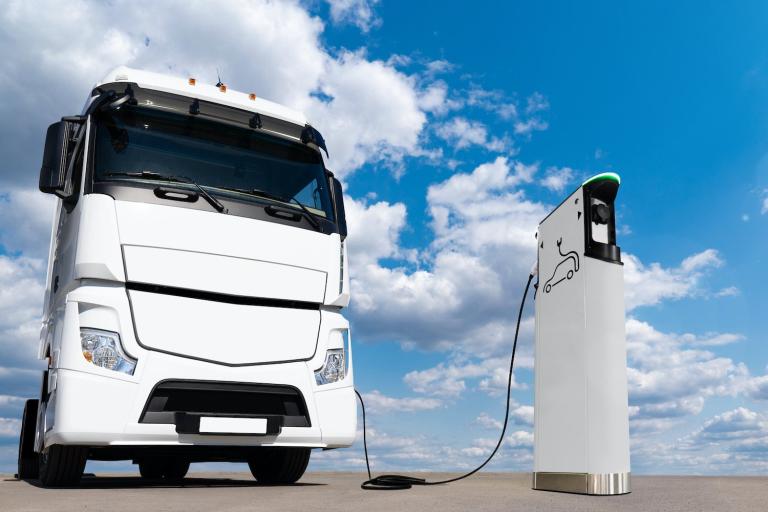Omdia: HERE is the clear leader in this space

Analysts Omdia rank location platforms — and once again, HERE came out on top in every category this year. Principal Analyst John Canali explains why.
HERE leads every category in Omdia's Location Platform Index, placing ahead of companies such as Google and TomTom.
The annual report is an ongoing evaluation of location platforms and their impact on businesses and society. It assesses each enterprise on the basis of six categories: core data, mapping and platform, services, monetization, users and ecosystem.
This year, HERE grew in three of these, overtaking Google in the user category, and received an indexed score of 7.88 out of a possible 10. Speaking to HERE360, Principal Analyst John Canali said: “HERE is a unique company in its ability to not only remain vital to the location-based services market in the face of organizational and industry changes from their legacy as NAVTEQ, through to Nokia, but also in presenting and executing on their vision of the future.
“The company has asserted its leadership in ADAS and autonomous driving and is rolling out new and exciting services to address the growing IoT market. After rigorous analysis of major LBS vendors, Omdia has ranked HERE as the clear leader in this space."
The six SAE Levels of Driving Automation™ start from Level 0, where a car is entirely dependent on a human driver, up to Level 5, where a car does not need human assistance.
What makes HERE stand out?
Omdia was impressed with HERE's double-digit growth in transportation and logistics last year, along with triple-digit growth in routing transactions.
The firm singled out the fact that 170 million vehicles today use HERE maps. More than 22 million vehicles use HERE advanced driver-assistance systems (ADAS), which Canali says are paving the way for greater levels of automated driving.
“There is a lot of enthusiasm around what HERE is doing with the Mercedes-Benz DRIVE PILOT system getting into the Level 3 autonomous driving space in Europe as well as HERE's work with BMW and others in North America," he said.
"Once you get to level four [of the SAE Levels of Driving Automation], there will be a step-level change in terms of technology, in terms of productivity, and in terms of what we can do as a society."
Although he said it might be some time before autonomous vehicles are seen driving freely in urban and suburban areas, we could expect to see them sooner in commercial trucking. This could help the transportation and logistics industry with labor shortages in time.

Sustainability has become a focus for many transportation and logistics enterprises.
Mapping the future
There are all sorts of industries that can benefit from location-based services, Canali added, beyond the benefits of automated driving. Private mapping has been identified by Omdia as a growth area. Industries that can benefit from private maps include mining and logging, where companies are deploying 5G networks to enable autonomous vehicles. “In areas that would be potentially dangerous for a human to go, you can have either a fully autonomous or remote-controlled vehicle," he said.
Other sectors that can get value from these maps include agriculture and warehouse work. “It's important to look at how enterprises are looking to map their campuses to come up with solutions for digital transformation," Canali said, adding that getting the mapping right was "a major step" toward improving safety in these industries.
HERE is helping end-users look at their sustainability goals and their ability to help negate carbon emissions.
Sustainability, while “a tough nut to crack," is increasingly becoming important to many businesses. “HERE is helping end-users look at their sustainability goals and their ability to help negate carbon emissions," Canali said.
The firm highlighted the way HERE has responded to current regulatory challenges and said we are well-positioned for future legislation. That has included European Intelligent Speed Assistance rules – and could increasingly apply to sustainability laws.
“There is good evidence that HERE is really out in front with regulation and is able to see what will be put in place before there is a clear line in the sand in terms of compliance," Canali said.
Soon, commercial compliance for fleets could become a bigger issue. That could relate to how they must operate in environmentally fragile areas, such as coastal paths. Maps could be part of the solution.
In fact, Canali said the logistics sector will turn more to location technology for savings as organizations find their margins squeezed.
“With rising fuel costs, fleet management companies will start to see the value they are getting from mapping and location services through demonstrable metrics and KPIs," he said.
Have your say
Sign up for our newsletter
Why sign up:
- Latest offers and discounts
- Tailored content delivered weekly
- Exclusive events
- One click to unsubscribe


